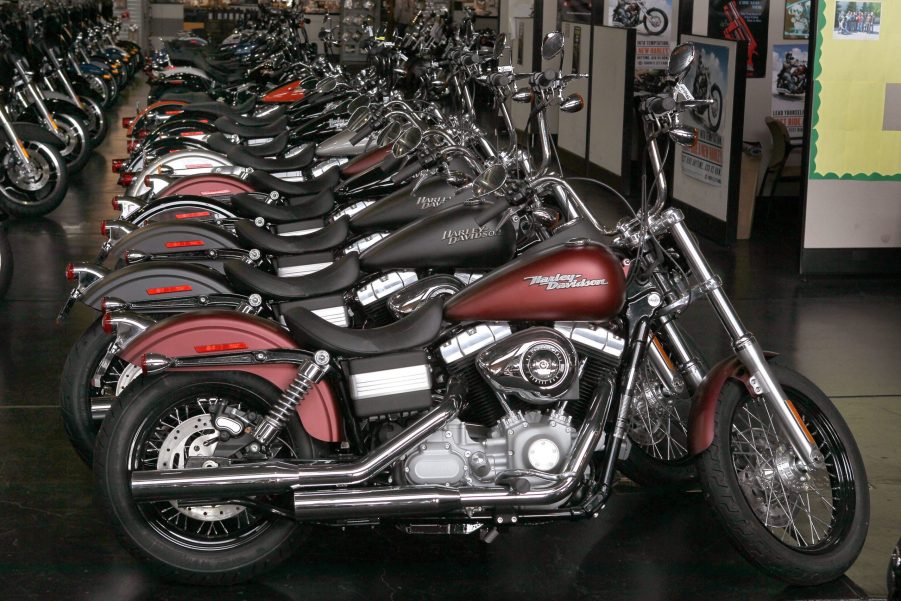
Harley-Davidson Abruptly Stops Making Gas-Powered Motorcycles
While continuing with LiveWire production, Harley-Davidson has abruptly stopped the production of all gas-powered motorcycles. At least for the next two weeks, Harley can’t manufacture them due to a “regulatory compliance” problem. That probably means an issue with emissions system components or the ECU.
Why is Harley-Davidson stopping production?

“Yesterday, Harley-Davidson took the decision to suspend all vehicle assembly and shipments (excluding LiveWire) for a two-week period,” from a Harley statement. “This decision, taken out of an abundance of caution, is based on information provided by a third-party supplier to Harley-Davidson late on Tuesday (5/17) concerning a regulatory compliance matter relating to the supplier’s component part.”
Though rather vague, that is probably by design. Many manufacturers utilize outside suppliers for certain components. That is the issue here, rather than a supply chain issue as we’ve witnessed with so many other automakers.
While Harley has seen its fair share of downtimes, the past year or so has been roses and backflips for the Milwaukee manufacturer. Last year sales were up by almost one-third. And in 2022, so far it is showing record profits in spite of other supply chain problems.
Why has Harley-Davidson gotten into electric bikes?

Harley’s move to electric motorcycles has been seen as a move to bring younger buyers into the fold. Its current demographic is dying off, and it needed something with a more broad-reaching appeal. Now it is planning on spinning off the LiveWire brand into a separate company.
To that end, it is in the process of soon going public with a SPAC merger with AEA-Bridges Impact Corp. Harley will still control 74-percent of Livewire after the initial public offering.
That will give it an infusion of capital and allow it to expand on its ambitious EV bike plans. So far in the 35 months that the LiveWire has been sold, Harley has made wholesale shipments of around 2,000 units. But in July last year, it had to drop the price of the LiveWire One by $8,000 from the original’s price of almost $30,000.
How has the LiveWire electric bike sold?

While the LiveWire looks like the right bike at the right time, actual sales of LiveWire products show that a majority of bikes sold were its StaCyc kids EV bikes. Some of the lack of profit for the adult bikes stems from Harley’s efforts to prepare its franchise store to sell the LiveWire. It has made numerous investments in its dealers.
Now, Harley is projecting the sale of over 7,000 units in 2023, according to BizTimes. But then, it has exceedingly high expectations of selling over 100,000 units by 2026. Essentially, it is saying it will sell 100,000 more LiveWire bikes a year within three years. And Harley has stated it doesn’t plan on being profitable “for the foreseeable future,” while it is investing in tooling, manufacturing, and dealer operations.
So, while in some cases things are looking up for Harley-Davidson, it still has a ways to go to profitability. But as an iconic American brand, we all hope it succeeds.



